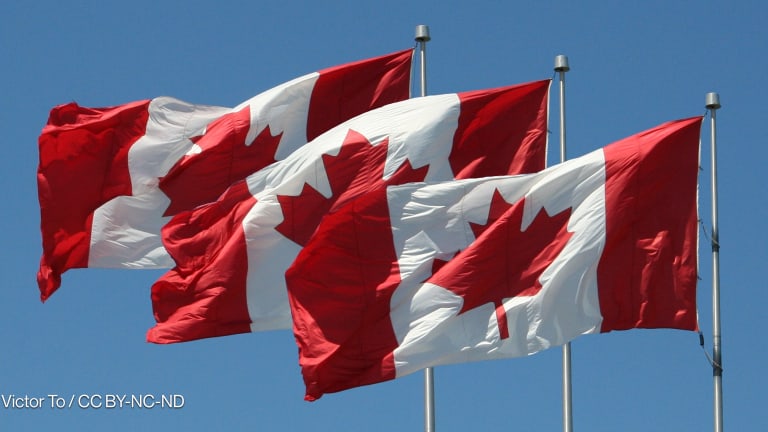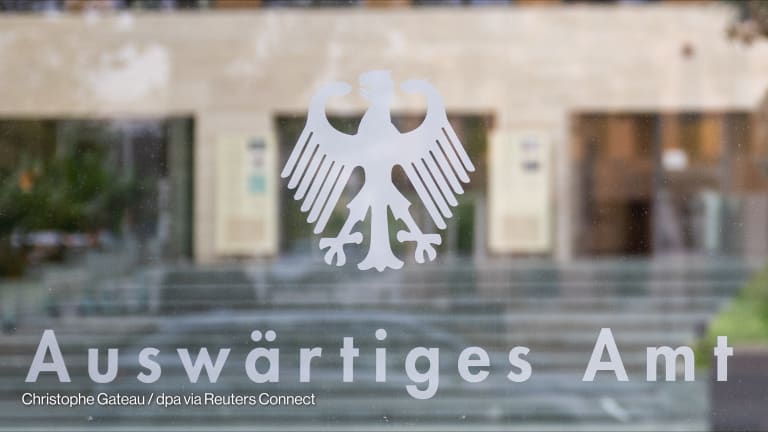Is Germany the next leader in ODA, and how will it spend its money?
Germany has maintained its position among the world's largest sources of development aid, ranking next to the U.S. for years.
According to the most recent data available, Germany ranks second among the world’s largest bilateral donors, and it looks very likely that by the end of this year, it will be in first place. Events of recent weeks suggest that the U.S. government has decided to abandon its development aid powerhouse status. While it’s extremely hard to predict total U.S. aid spending in 2025, well over half of its spending currently appears to have been stopped. In 2023, German aid was $34.7 billion, while U.S. aid was $62.3 billion — both in 2022 constant prices. If the U.S. cuts do indeed halve development spending, Germany would likely become the world’s largest donor this year, for the first time since 1960 — the first reporting year, following the establishment of the Organisation for Economic Co-operation and Development in 1961. However Germany, too, has made a series of budget cuts in the last few years — part of a growing trend among Western donors of deprioritizing international cooperation — albeit the German cuts are far more modest than those in the U.S. What has happened to German aid? Germany saw an upward trend in aid spending between 2018 and 2022, both in terms of volume and relative to its gross national income, or GNI. From $25.1 billion in 2018, its official development assistance, or ODA, reached $35.6 billion in 2022 — both figures adjusted to 2022 constant prices by OECD. Its ODA-to-GNI followed the same pattern — from 0.61% in 2018 to 0.73% in 2020. This was the first time since 2016 that Germany hit the 0.7% target set by the United Nations, placing it among just a handful of donors to have crossed the elusive mark. It peaked further in 2022, at 0.85%. However, government-wide budget cuts, beginning in 2023, adversely affected the allocations to the German Federal Ministry for Economic Cooperation and Development, or BMZ, and the German Federal Foreign Office, or AA — two of Germany’s top ODA-spending agencies. The budget cuts persisted in 2024 and will likely continue this year. OECD data showed that German aid was worth 0.82% of the country's GNI — an increase in cash terms, but about $1 billion less, in real terms, from 2022. We looked into the primary players in German aid to see how they spend on development, using the latest available data gathered from their financial reports and project portals. All figures are in their current prices, while the U.S. dollar conversions are in historical rates. How is German aid dispensed? German ODA comes from several agencies, with the BMZ and AA accounting for 44.9% and 12.9% of the total aid disbursement in 2022, respectively. BMZ is Germany’s lead aid agency, managing the largest portion of its ODA. It also supervises two state-owned implementing bodies: Deutsche Gesellschaft für Internationale Zusammenarbeit, or GIZ, and KfW, which comprises the KfW Development Bank and DEG, Germany’s development finance institution. GIZ plans and executes Germany’s technical cooperation with partner countries, while KfW heads the bilateral financial cooperation. AA, meanwhile, directs Germany’s humanitarian efforts and U.N. peace missions. BMZ The German government appropriated €11.2 billion ($12.1 billion in 2024 rates) for BMZ in 2024. The bulk, worth €5.2 billion, or 45.9% of the total, went to bilateral cooperation. The other top recipients were civil society and the private sector with €1.3 billion, food security and the environment with €968.7 million, and other special initiatives with €971.5 million. A significant portion of the budget also went to contributions to the multilateral system, including the World Bank Group, which got €986.5 million; the U.N. and other multilaterals, with €979.5 million; and the European Development Fund, with €309.3 million. The rest went to other areas such as research and training, contribution to other regional banks, and administrative costs. Based on the Federal Ministry of Finance’s website, BMZ’s budget since 2019 — the oldest available figure — remains at 2.1% of the total government budget. For 2025, this amounted to €10.3 billion, or almost €1 billion less, in monetary terms, than the previous year. GIZ GIZ’s business volume in 2023 amounted to €4 billion ($4.3 billion in 2023 rates), which is flat in real terms compared to the previous year. While the sectoral and geographic breakdown for the year is not available, GIZ provides information on all its current projects through its portal, which gets updated daily. Based on the data, GIZ currently has over 1,400 ongoing projects, worth €22.1 billion ($23.9 billion in latest rates). The amount included co-financing from other donors, with GIZ’s share amounting to €3.8 billion, or 17% of the total. The bulk of this went to 150 global projects, worth €6.2 billion. Among countries, the largest sum went to Ukraine, with €788.2 million for 31 projects. Jordan ranked next, with €613.9 million; Iraq, with €324.1 million; Mozambique, with €306.8 million; Afghanistan, with €279.3 million; and India, with €264.5 million. A considerable amount was also allocated to regional projects, with €903.5 million earmarked for regional projects in Africa and another €279.8 million given to the African Union. GIZ also spent €491.5 million on projects in Germany. The rest of the money went to other country or regional projects as well as recipient organizations, such as the Association of Southeast Asian Nations, or ASEAN, and the Intergovernmental Authority on Development, or IGAD. KfW Based on its portal, KfW’s total commitment in 2024 reached €7.8 billion ($8.5 billion in 2024 rates). This represents a €1.2 billion monetary drop from 2023. More than a quarter, worth €2 billion, went to sub-Saharan Africa. Then Asia, with nearly €1.7 billion; North Africa and the Middle East, with $1.5 billion; Europe, with €1.3 billion; and Latin America, with €1 billion. The remaining money, worth €408.8 million went to global projects. India was the largest recipient among countries, with €783.2 million. Morocco followed, with €462 million; Indonesia, with €400 million; South Africa, with €372.2 million; and Mexico, with €349.9 million. Sectorally, nearly half of KfW’s committed fund, worth €3.8 billion, went to social infrastructure and services. Of the areas under the social infrastructure and services sector, water and sanitation got the largest chunk, worth €1.4 billion. Government and civil society ranked next, with €711.5 million; education, with €583.9 million; health, with €212.7 million; and population and reproductive health, with €38.1 million. Another €920 million went to all other social infrastructure and services. Another 42%, worth €3.3 billion, went to the economic infrastructure and services sector. The rest went to production and trade, with €363 million; multisectoral activities, worth €312.9 million; and commodity and general program support, worth €30 million. Try out Devex Pro Funding today with a free five-day trial, and explore funding opportunities from over 850 sources in addition to our analysis and news content.
According to the most recent data available, Germany ranks second among the world’s largest bilateral donors, and it looks very likely that by the end of this year, it will be in first place.
Events of recent weeks suggest that the U.S. government has decided to abandon its development aid powerhouse status. While it’s extremely hard to predict total U.S. aid spending in 2025, well over half of its spending currently appears to have been stopped.
In 2023, German aid was $34.7 billion, while U.S. aid was $62.3 billion — both in 2022 constant prices. If the U.S. cuts do indeed halve development spending, Germany would likely become the world’s largest donor this year, for the first time since 1960 — the first reporting year, following the establishment of the Organisation for Economic Co-operation and Development in 1961.
This story is forDevex Promembers
Unlock this story now with a 15-day free trial of Devex Pro.
With a Devex Pro subscription you'll get access to deeper analysis and exclusive insights from our reporters and analysts.
Start my free trialRequest a group subscription Printing articles to share with others is a breach of our terms and conditions and copyright policy. Please use the sharing options on the left side of the article. Devex Pro members may share up to 10 articles per month using the Pro share tool ( ).
Miguel Tamonan is a Senior Development Analyst at Devex, where he analyzes data from public and private donors to produce content and special reports for Pro and Pro Funding readers. He has a bachelor’s degree in Political Science with a Major in International Relations from the Polytechnic University of the Philippines.








